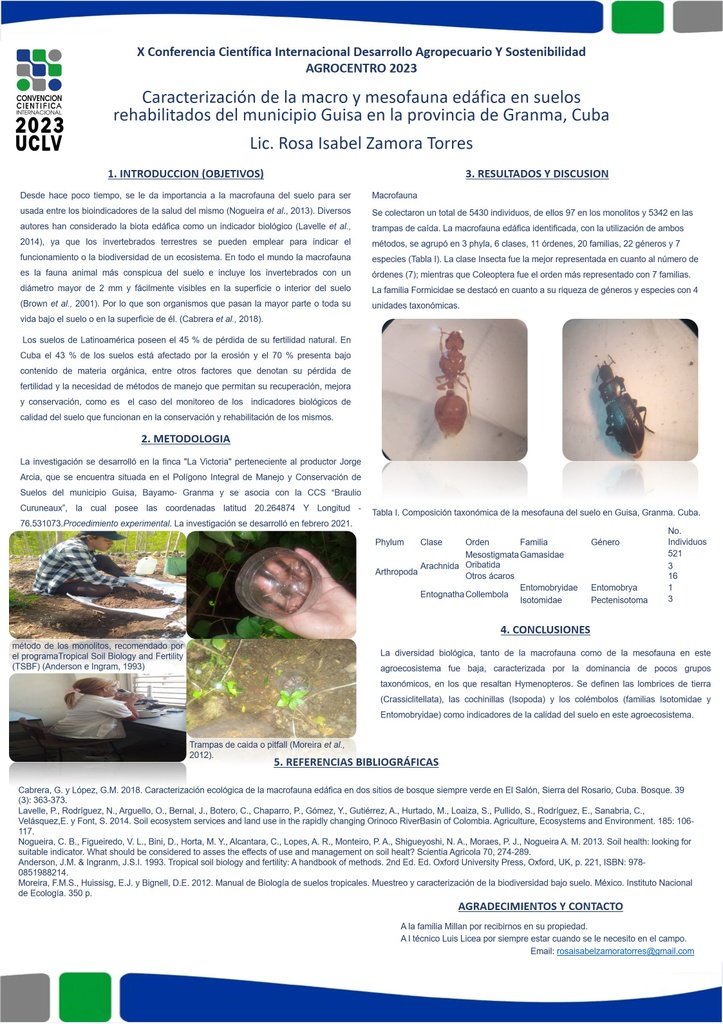Executive Secretary

9th International Scientific Conference on Agricultural Development and Sustainability
10th Symposium of Agronomy

Abstract
The research was carried out in February 2021. The edaphic macrofauna was collected according to the standard methodology proposed by Tropical Soil Biology and Fertility and by the complementary methodology of pitfall traps. It was identified with the use of keys and taxonomic references, with the collaboration of entomologists.The mesofauna was collected using pitfall traps and was represented by springtails, gammasine mites and oribatida. A total of 5438 individuals were collected, 97 of them in the monoliths and 5341 in the pitfall traps. The edaphic macrofauna identified, with the use of both methods, was grouped into 3 phyla, 6 classes, 11 orders, 20 families, 22 genera and 7 species. The edaphic macrofauna community was dominated by ants (Hymenoptera: Formicidae), which means that soil engineers had absolute control in this agroecosystem. The edaphic mesofauna was represented by springtails, gammasine mites and oribatids. Of 11 orders identified in total, 10 were collected in the monoliths, 10 in the traps and 6 orders were collected in both methods.Earthworms (Crassiclitellata), scale insects (Isopoda) and springtails (families Isotomidae y Entomobryidae) are defined as biological indicators of soil quality in this agroecosystem.
Resumen
La investigación se realizó en febrero de 2021. La macrofauna edáfica se colectó según la metodología estándar propuesta por el Tropical Soil Biology and Fertility y por la metodología complementaria de las trampas de caída. Se identificó con el uso de claves y referencias taxonómicas, con la colaboración de entomólogos. La mesofauna se colectó mediante las trampas de caída. Se colectaron un total de 5438 individuos, de ellos 97 en los monolitos y 5341 en las trampas de caída. La macrofauna edáfica identificada, con la utilización de ambos métodos, se agrupó en 3 phyla, 6 clases, 11 órdenes, 20 familias, 22 géneros y 7 especies. La comunidad de la macrofauna edáfica estuvo dominada por las hormigas (Hymenoptera: Formicidae), lo que conlleva a que los ingenieros del suelo tuvieran un dominio absoluto en este agroecosistema. La mesofauna estuvo representada por colémbolos, ácaros gamasinos y oribatidos. De 11 órdenes identificados en total, 10 se colectaron en los monolitos, 10 en las trampas y 6 órdenes se colectaron en ambos métodos. Se definen las lombrices de tierra (Crassiclitellata), las cochinillas (Isopoda) y los colémbolos (familias Isotomidae y Entomobryidae) como indicadores de la calidad del suelo en este agroecosistema.
About The Speaker

Rosa Isabel Zamora Torres

Discussion

